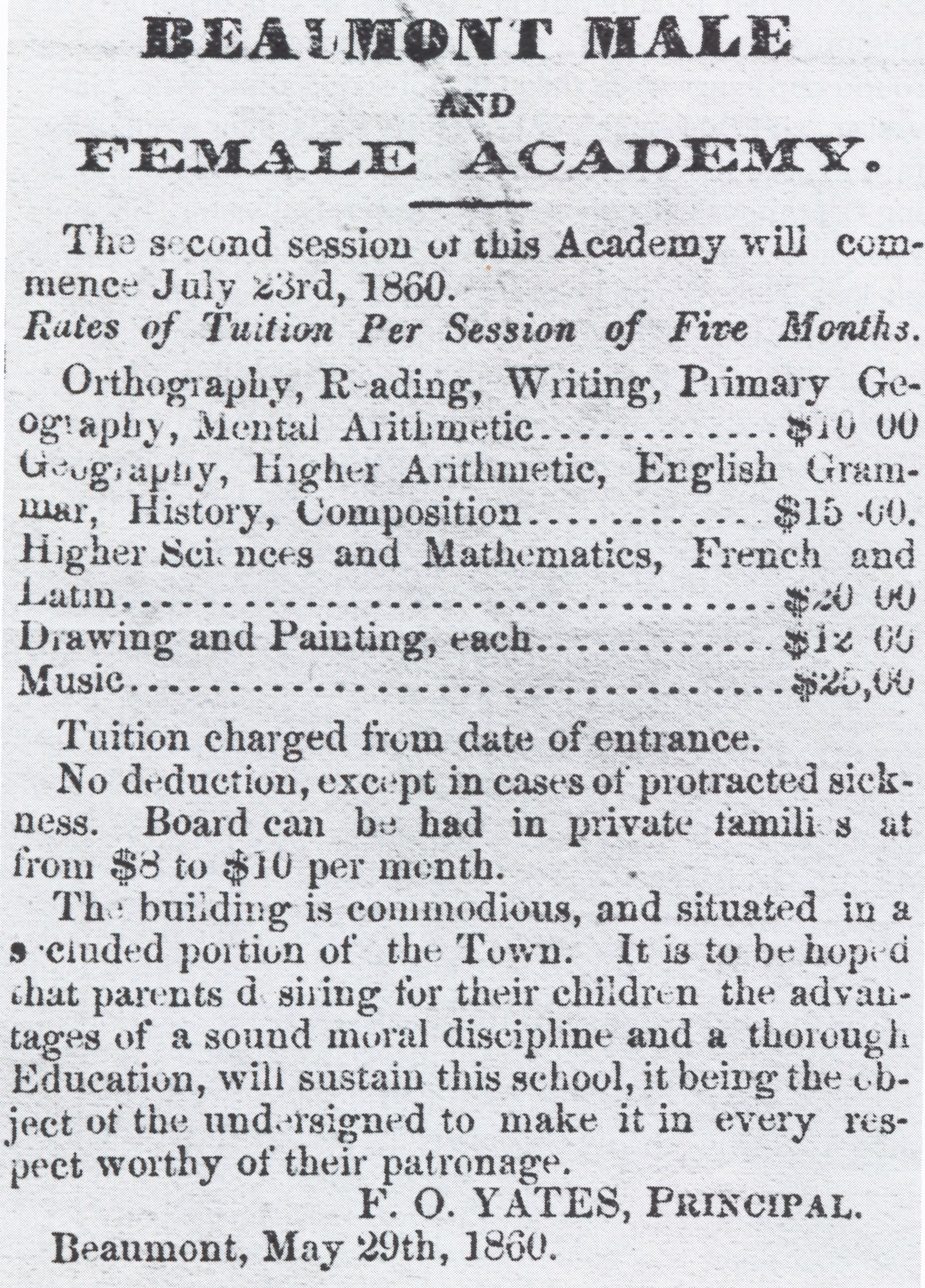BEAUMONT EDUCATION HAD HUMBLE BEGINNINGS
By Judith Linsley
Frederick Law Olmstead, in his 1840s travelogue, "A Journey Through Texas," noted that though many of the original immigrants to Texas were well educated, their children were illiterate because of the lack of schools. Education was a top priority but took a while.
Beaumonters had already built a one-room log schoolhouse, but had no teacher, when founder Joseph Pulsifer arrived in 1835. Later Pulsifer and others hired Benjamin Harper, though his arrival was delayed because of military service in the Texas Revolution.
Early education in Beaumont was privately funded. By the 1850s, Jefferson County had several schools located in one-room buildings and private homes. Families chipped in to cover a small salary for a teacher, who boarded with one of the families.
Teachers often supplemented their income with other work; many later entered into law, politics, or journalism. In 1866 Drusilla McFaddin, daughter of rancher William McFaddin, married her tutor, Ambrose Dudley Kent. He later became a state representative.
In 1858, the Beaumont Male and Female Academy offered reading, spelling, writing, and arithmetic, plus "primary geography, higher mathematics and painting." Tuition was $10-$25 per session; board in private homes ranged from $8-$10 per month.
Early Jefferson County teachers had their work cut out for them. About 1870, British-born John W. Leonard (later founder of the Beaumont Enterprise) was hired by rancher Moise Broussard to teach at the Taylor's Bayou settlement. The nearly 40 students included 5 grown cowboys; the children spoke mainly French or a "rural Texan vernacular."
Leonard's initial concern about controlling such a large and diverse group disappeared when one of the cowboys told the unruly youngsters:
"Mr. Moise let us come here to learn to read and write and we've got to do it this term. If you cut up so we can't study we'll come over and wring your dam' necks, and that goes. Savvy?"
After the Civil War, the Freedman's Bureau made short-lived attempts to establish African American schools in 1867 and 1868, but the first permanent school for Blacks opened in 1870, followed by others in 1874 and 1878. African American educators Woodson Pipkin, Charles Pole Charlton, and T.T. Pollard were the organizers.
Until the late 1870s, Jefferson County oversaw schools, which were still privately funded. In 1879, the new Beaumont Academy built a $600 school on Park Street. In 1883 the Beaumont School District was organized to administer both black and white schools in town. A second district, South Park, began in 1891, serving both races.
Permanent Catholic education came to Beaumont in 1895 with Our Lady of Perpetual Help School. My grandmother, Avie French, and her sister Nena attended OLPH around 1900. The Dominican Sisters made the students sing their multiplication tables each day before they ate lunch. Grandma said she learned to multiply very quickly. I'd be willing to bet that today's education systems contain no stronger incentive for learning.
John W. Leonard, "Five Decades Ago in Beaumont," Beaumont Enterprise, undated article (1932). Judith Walker Linsley and Ellen Walker Rienstra, Beaumont: A Chronicle of Promise (Woodland Hills, California: Windsor, 1982). John H. Walker and Gwendolyn Wingate, Beaumont, a Pictorial History (Virginia Beach, Virginia: Donning, 1981).
